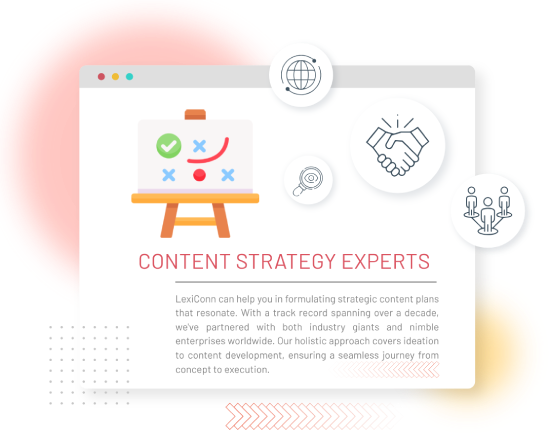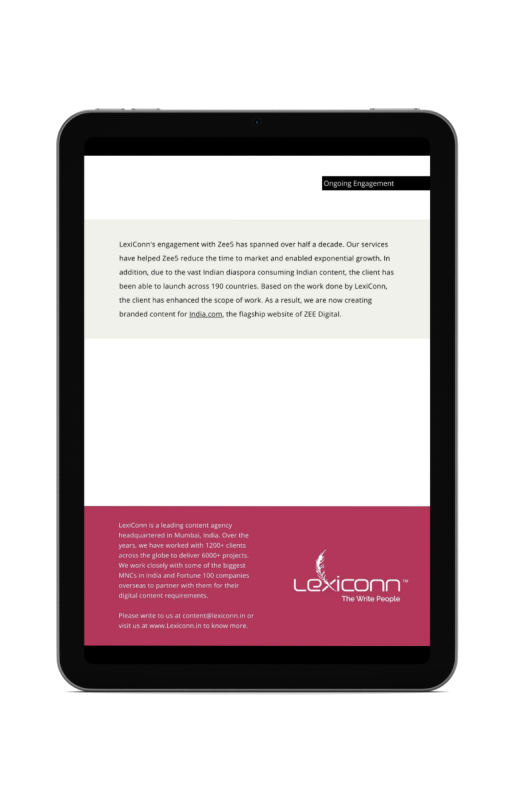
In today's digital landscape, a well-crafted content strategy is pivotal for businesses aiming to achieve sustainable growth. By strategically aligning content marketing efforts with overarching business objectives, companies can enhance brand visibility, foster customer engagement, and drive conversions. This comprehensive guide delves into the essential steps to create a scalable content strategy that not only resonates with your target audience but also propels business growth.
A content strategy is far more than just a plan to publish articles or social media posts—it is a comprehensive blueprint that governs how all forms of media assets, including written content, visual elements like images and infographics, and multimedia formats such as videos and podcasts, are created, managed, and distributed to achieve well-defined business goals. It is a structured approach that ensures every piece of content produced serves a clear purpose, resonates with the target audience, and supports broader organizational objectives. Without a robust content strategy, businesses often resort to sporadic content creation, which can result in inconsistent messaging, wasted resources, and content that fails to engage or convert.
At the heart of an effective content strategy lies careful planning. It begins with understanding the audience’s preferences, challenges, and expectations. This knowledge helps businesses develop content that addresses specific pain points, offers solutions, and provides value. Equally important is aligning content initiatives with the brand’s voice and core values. Consistency in tone, style, and messaging fosters brand recognition and builds trust with the audience.
Creation is only one part of the equation. Distribution plays a pivotal role in ensuring that the right content reaches the right audience through appropriate channels, whether it’s the company website, social media platforms, email newsletters, or third-party publications. This is where governance becomes vital. Clear guidelines on content quality, frequency, and review processes ensure that every content piece maintains the brand’s standards and adheres to legal and ethical requirements.
Ultimately, a well-executed content strategy allows businesses to move beyond isolated content efforts, transforming their content marketing into a powerful tool that drives customer engagement, boosts brand authority, and delivers measurable outcomes that contribute directly to business growth. This holistic approach differentiates market leaders from those merely adding to the digital noise.
Content marketing is the engine that powers a robust content strategy. It involves creating and distributing valuable, relevant, and consistent content to attract and retain a clearly defined audience. When executed effectively, content marketing can:
Enhance Brand Awareness: Consistent, high-quality content increases visibility and positions the brand as an authority in its industry.
Build Trust and Credibility: Providing informative and valuable content fosters trust and establishes credibility with the audience.
Drive Organic Traffic: Optimized content improves search engine rankings, leading to increased organic traffic.
Generate Leads and Conversions: Engaging content guides prospects through the buyer's journey, ultimately leading to conversions.
Nurture Customer Relationships: Regularly updated content keeps existing customers engaged and encourages repeat business.
Building a content strategy that converts requires a methodical approach. The following steps outline a roadmap to develop a scalable and effective content plan.
Begin by identifying what you aim to achieve with your content strategy. Align these objectives with your overall business goals to ensure coherence and direction. Common objectives include:
Increasing Brand Awareness: Expanding reach and recognition in the market.
Driving Website Traffic: Attracting more visitors to your site.
Generating Leads: Capturing potential customer information for follow-up.
Boosting Sales: Converting leads into paying customers.
Enhancing Customer Retention: Maintaining and nurturing existing customer relationships.
A deep understanding of your target audience forms the backbone of a successful content strategy. Without knowing who you are creating content for, your efforts risk falling flat, failing to engage, or worse, alienating potential customers. Developing detailed buyer personas is a critical first step in this process. Buyer personas are semi-fictional representations of your ideal customers, constructed based on market research, data analysis, and customer insights. They encapsulate key details such as demographics, professional backgrounds, goals, challenges, online behavior, and buying preferences.
Start by analyzing your existing customer base. Who are your best customers? What industries do they belong to? What problems are they trying to solve? Conduct surveys, interviews, and gather feedback from your sales and customer service teams to identify recurring patterns. This information helps segment your audience into different groups, enabling you to tailor content that speaks directly to each segment’s needs and interests.
Understanding the pain points of your audience is crucial. Pain points refer to the specific problems, frustrations, or challenges your customers face. Content that addresses these pain points positions your brand as a problem solver, fostering trust and credibility. For instance, if your audience struggles with generating leads, crafting content around effective lead generation tactics can attract their attention and demonstrate your expertise.
Furthermore, knowing where your audience spends their time online allows you to distribute content on the right platforms. Are they active on LinkedIn, reading industry blogs, or searching for solutions on Google? Aligning your content plan with their online behavior ensures your message reaches them at the right time and place.
Ultimately, a well-defined audience profile ensures that every content piece is purposeful, resonates deeply, and drives engagement—laying the groundwork for a content strategy that contributes to long-term business growth.
Assessing your existing content is a foundational step in building a high-impact content strategy. A content audit involves conducting a comprehensive review of all the content your business has produced across various platforms, including your website, blog, social media channels, email newsletters, and any other digital assets. The primary goal is to understand what is working well, what is underperforming, and what can be improved. This process allows businesses to evaluate how their current content aligns with their overall business objectives and content marketing goals.
During the content audit, it is important to categorize content based on its performance metrics, such as website traffic, engagement rates, lead generation, and social media shares. Identify pieces that have successfully driven business growth, and analyze the factors that contributed to their success. Similarly, take note of underperforming content and investigate the reasons behind its lackluster performance. Common issues could include poor search engine optimization (SEO), outdated information, lack of audience relevance, or weak calls to action.
A thorough content audit also reveals content gaps—areas where your audience’s needs are not being met. Perhaps you’ve covered introductory topics extensively but neglected more advanced content, or maybe certain customer pain points remain unaddressed. Recognizing these gaps can guide your future content plan, helping you create targeted content that resonates with your audience.
Additionally, the audit often uncovers opportunities to repurpose existing content. For instance, a well-performing blog post could be transformed into an infographic, a video, or a series of social media posts. This approach maximizes the value of your content investments and saves time in content creation.
Ultimately, conducting a detailed content audit equips your business with the insights needed to refine your content strategy, ensuring your content remains relevant, valuable, and aligned with your growth objectives.
Performing a thorough competitor analysis is a crucial step in developing a robust content strategy that drives business growth. It involves closely examining the content marketing approaches adopted by other players in your industry—both direct competitors and those operating in adjacent spaces. This analysis allows businesses to gain a clearer understanding of what resonates with their shared target audience, identify potential content gaps, and uncover innovative ideas that can differentiate their brand.
Begin by identifying your key competitors, which may include businesses of similar scale or even larger industry leaders setting benchmarks in content marketing. Explore their digital presence, including their website, blog, social media channels, newsletters, and any other platforms where they engage with their audience. Pay attention to the types of content they produce—be it long-form articles, quick-read blogs, infographics, videos, or podcasts—and note how frequently they publish.
Next, analyze the performance of their content. Tools like SEMrush, Ahrefs, or BuzzSumo can help identify high-performing content based on metrics like social shares, backlinks, or keyword rankings. This data reveals which topics and formats are capturing audience attention. Additionally, look for patterns in their tone, style, and messaging. Are they positioning themselves as thought leaders, or focusing on simplifying complex industry topics? Are their calls-to-action driving user engagement?
Competitor analysis is not about replicating what others are doing; rather, it is about identifying what works and finding ways to improve upon it. If a competitor is receiving traction with "how-to" guides, consider developing more comprehensive guides enriched with original research or client case studies. If their social media videos are gaining attention, explore creating interactive content or live sessions to increase engagement.
Ultimately, understanding competitor content strategies provides valuable insights, enabling your business to craft a distinctive content plan that aligns with your goals while standing out in the crowded digital landscape.
Based on your objectives, audience insights, and competitive analysis, create a comprehensive content plan that outlines:
Content Themes and Topics: Areas of focus that align with audience interests and business goals.
Content Types and Formats: Diversify your content through blogs, videos, infographics, podcasts, etc., to cater to different audience preferences.
Content Calendar: A schedule detailing when and where each piece of content will be published, ensuring consistency and timely delivery.
Creating high-quality content is the cornerstone of any successful content strategy. It is not merely about producing large volumes of articles, blogs, or videos but about ensuring that each piece is crafted with precision, depth, and purpose. Quality content is well-researched, factually accurate, and tailored to address the specific needs, questions, or pain points of your target audience. When your content answers real concerns and offers practical solutions, it positions your brand as a trusted authority in the industry, fostering long-term audience loyalty.
One of the most effective ways to elevate content quality is by integrating storytelling. Stories resonate with readers on a deeper, emotional level, transforming mundane topics into engaging narratives. A well-told story can illustrate the practical application of a product, depict a customer’s journey to success, or humanize your brand’s message, making it more relatable. Readers are far more likely to remember and share content that connects emotionally rather than content that merely lists facts.
Equally important is the role of search engine optimization (SEO). High-quality content must be discoverable; otherwise, its impact is severely limited. Incorporate relevant primary, secondary, and long-tail keywords naturally into the content, ensuring that they blend seamlessly without disrupting readability. Avoid keyword stuffing, as it can harm both user experience and search engine rankings. Instead, focus on crafting headlines, subheadings, meta descriptions, and alt texts that enhance SEO while maintaining a natural flow.
Moreover, structuring your content with clarity is vital. Use short paragraphs, bullet points when necessary, and proper formatting to enhance readability. Supporting your content with credible sources, data, and examples further boosts its authenticity and reliability. High-quality content not only attracts traffic but also engages visitors, encourages sharing, and ultimately drives conversions—playing a pivotal role in the business growth journey through a robust content marketing plan.
Publishing content is just the beginning. Promote your content through various channels to maximize reach:
Owned Media: Utilize your website, blog, and email newsletters.
Earned Media: Leverage social shares, guest posts, and influencer collaborations.
Paid Media: Invest in paid promotions like social media ads and sponsored content to amplify reach.
Interaction fosters community and loyalty. Respond to comments, encourage discussions, and solicit feedback. Engagement not only builds relationships but also provides insights into audience preferences and areas for improvement.
Utilize analytics tools to track the performance of your content against predefined Key Performance Indicators (KPIs) such as traffic, engagement, lead generation, and conversion rates. Regular analysis helps in understanding what works and what doesn't, enabling data-driven decisions for future content initiatives.
Content strategy is not static. Regularly update your strategy based on performance data, industry trends, and evolving business goals. Continuous optimization ensures that your content remains relevant and effective in driving business growth.
Building a high-impact content strategy that drives business growth is not an overnight task—it is a continuous, evolving process that requires a blend of strategic planning, creativity, and data-driven decision-making. A well-executed content strategy acts as the foundation for successful content marketing, enabling businesses to connect with their audience, foster trust, and convert engagement into tangible results. By understanding your business goals, knowing your audience, creating high-quality content, and distributing it effectively, you lay the groundwork for sustainable growth.
Moreover, consistently measuring performance and optimizing your approach ensures that your content strategy remains relevant and aligned with the ever-changing market landscape. Businesses that invest time and effort into crafting a thoughtful content plan ultimately position themselves as industry leaders, gaining a competitive edge while driving long-term success.
For those seeking professional expertise in content creation, companies like LexiConn offer specialized services that help businesses develop and execute content strategies tailored to their unique needs. With experienced content specialists and a proven track record, LexiConn empowers businesses to unlock the full potential of content marketing and achieve sustained growth.
The path to business growth through content strategy is clear—plan strategically, create with purpose, engage authentically, and measure consistently. In doing so, your content will not only attract attention but will also inspire action, solidifying your brand’s position in the hearts and minds of your audience.
Book a FREE 30-minute website audit consultation today. Visit www.lexiconn.in or email [email protected] to get started.



I have read and accept the Privacy Policy
Read More